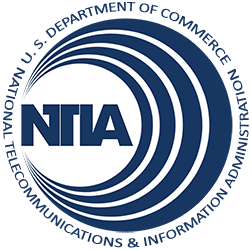Broadband’s ability to expand educational and employment opportunities is especially meaningful for Americans who are deaf or hard of hearing, a community that faces unique challenges in education and that suffers from a rate of unemployment much higher than the national average. Communication Service for the Deaf, Inc. (CSD) intends to expand broadband adoption among people who are deaf and hard of hearing and provide them with online tools to more fully participate in the digital economy. The project proposes to employ a combination of discounted broadband service and specialized computers, technology training from an online state-of-the art support center customized to the community’s needs, public access to videophones at anchor institutions from coast to coast, and a nationwide outreach initiative. Thousands will gain online access to all the Internet has to offer, including sign language interpreters, captioned video services, and other content and functionalities designed especially to advance their educational, employment, and healthcare interests.
South Dakota

| Grantee | Total Award | Type |
|---|---|---|
| Communication Service for the Deaf, Inc. | $14,988,657 | Sustainable Adoption |
| One Economy Corporation | $28,519,482 | Sustainable Adoption |
| South Dakota Bureau of Information & Telecommunications | $5,729,415 | Broadband Data & Development |
| South Dakota Network, LLC | $20,572,242 | Infrastructure |
| University Corporation for Advanced Internet Development | $62,540,162 | Infrastructure |
The 21st Century Information and Support Ecosystem project proposes to implement a comprehensive program of computer training, wireless Internet access, broadband awareness marketing, and online content and applications to residents of 159 affordable and public housing developments and low-income communities in 50 cities and towns across 31 states and the District of Columbia. The project plans to implement four principal programs: training 2,500 youth to become “Digital Connectors” who will then provide digital literacy training to others in their communities; deploying localized broadband networks in public housing developments; developing online content and applications aimed at low-income, low-literacy audiences.
Project Components
State Capacity Building:
The project will support the continuation of a state broadband working group. Through this working group, the South Dakota Bureau of Information and Telecommunications (BIT) will expand the existing Broadband Advisory Team (BAT) and further coordinate statewide efforts. The BAT will assist the staff in coordinating outreach projects, including broadband technology events and meetings with stakeholders across government, private industry, and the general public.
Technical Assistance:
The project will support the deployment of technology teams that will initially provide a network assessment to Community Anchor Institutions (CAI) across the state, including, but not limited to, schools and local government institutions. When the awardee undertook this activity on a limited basis, it discovered that these assessments led to a number of simple network configuration solutions that, when implemented, improved the speed of the CAIs’ broadband services. For interested CAIs, the team will also provide technology strategic planning, network security support and “train-the-trainer” activities, so that the CAI staff has the capacity to provide itself with the ongoing support needed.
Programs that Support Computer Ownership and Internet Adoption:
Building on the technology assistance project described above, BIT will initiate a subgrant competition that will be open to the CAIs that complete the technical assistance program. The subgrants will allow the CAIs to purchase a portion of the equipment or software identified in the assessment. BIT will also provide installation and training support, enabling the CAI to fully manage and use the equipment.
Data Collection, Integration, and Validation:
This project was originally funded for broadband planning activities and two years of data collection. In September of 2010, this project was amended to extend data collection activities for an additional three years and to identify and implement best practices.
Address File Development:
This project will create a comprehensive geocodable point dataset for the state. The Department of Revenue and Regulation will assist BIT with collecting existing addresses, and will coordinate the datasets through county offices. The counties will receive funding to assist them in creating county-level address files. Gap analysis will be performed on the master list from the counties and missing addresses will be crosschecked against data held by the county office and through 9-1-1 Public Safety Answering Points. A web portal will be then created to allow stakeholders to see the addresses and to validate information.
South Dakota Network (SDN), a partnership of 27 independent telecom providers, proposed Project Connect South Dakota to add 140 miles of backbone network and 219 miles of middle mile spurs to SDN’s 1,850-mile fiber-optic network. This improvement in the network proposes to enable the delivery of at least 10 Mbps service to more than 220 existing anchor institution customers in rural and underserved areas of the state. The network also intends to connect more than 300 new anchor institutions, including public middle and high schools, libraries, universities, hospitals, clinics, public safety agencies, courthouses, government buildings, and National Guard facilities. Patients and hospitals are expected to benefit from the network through the use of telemedicine to update medical records, to conduct remote testing, and to provide diagnostic services. School children in sparsely populated areas are expected to benefit through improved participation in distance-learning programs.
As part of a longstanding project to connect essential community anchor institutions across the country, and facilitate closer collaboration and long-term benefits for education, research, healthcare, public safety, and government services, the University Corporation for Advanced Internet Development (UCAID) proposes a comprehensive 50-state network benefitting approximately 121,000 community anchors. The project proposes a large-scale, public-private partnership to interconnect more than 30 existing research and education networks, creating a dedicated 100-200 Gbps nationwide fiber backbone with 3.2 terabits per second (TBps) total capacity that would enable advanced networking features such as IPv6 and video multicasting. The project plans to connect community anchors across all disciplines into virtual communities with shared goals and objectives, including colleges, universities, libraries, major veterans and other health care facilities, and public safety entities, with additional benefits to tribes, vulnerable populations, and government entities.
